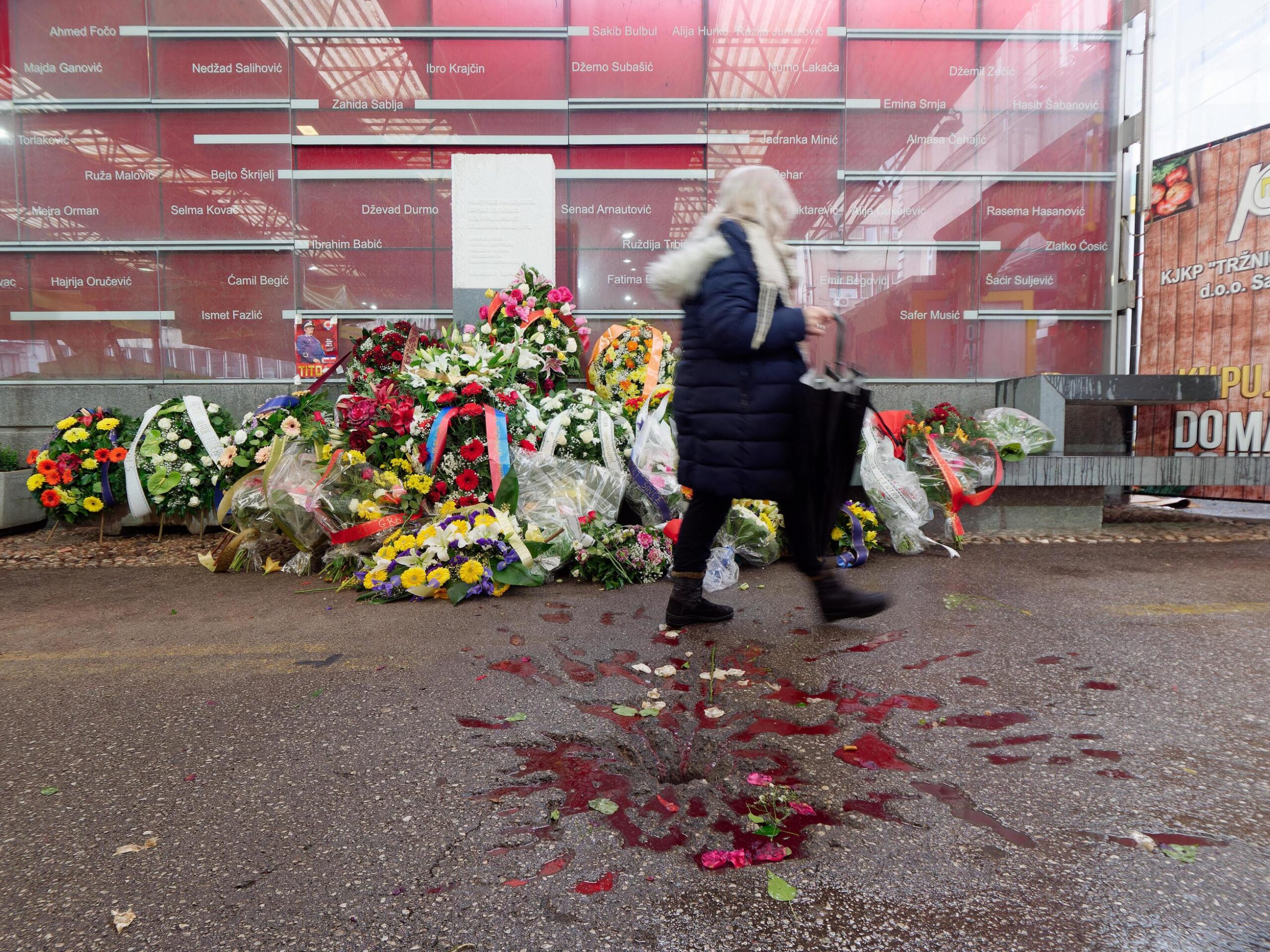For those who are searching to discover about a complex war-history of Sarajevo, its turbulent and prolonged duration of the siege, that left deep scars on today’s survivors and veterans, the ‘Roses of Sarajevo’ tour and civilians story is a must!
ROSES OF SARAJEVO
Roses of Sarajevo is a term used after the longest siege in modern history, the 1425 days siege of Sarajevo. A total of 150 red marks all around the city of Sarajevo, that resembled roses. They serve to remember all civilians killed by mortar shells in the war of Sarajevo. A number of 470.000 shells, during almost 4 years of the siege, or 329 shells daily, were launched from mountains around the town into the valley of Sarajevo.

ROSES OF SARAJEVO TOUR
My journey begins with meeting a local survivor of the siege, ready to share the story of him and his family through the turbulent times of history. By reading and doing many research about the war and the tour itself, I concluded that the complexity of the war has to be approached and described from a civilian that experienced it 30 years ago, who also wrote a book on the topic. His story begins with introducing Sarajevo sights and explaining historical monuments on the way to the Tunnel of Hope museum, the core survival place of Sarajevo people.
On the way, we were traveling through the time by passing the oldest part of the city, known as Ottoman part of Sarajevo, but also the Austro-Hungarian and Yugoslav (Communist) parts. Due that the tunnel is located in the suburb of Sarajevo, you have a chance to explore Sarajevo from the beginning to the end. The tunnel of Hope was the only way out from the siege, constructed by citizens of Sarajevo in 1993. It was used for the escape of war and supply of food and munition. Today, besides all explained exhibitions in the complex, you can enter and pass through the tunnel, the path of survival. More historically, it is the place which really ended the 20th century.
After the Tunnel of Hope Museum, we were heading to the Sniper zones and passing through East Sarajevo, which is located in the smaller entity of Bosnia and Herzegovina, called ‘Republika Srpska’. A predominantly place of Bosnian Serbs. Exiting that entity and coming back to Sarajevo, we visited the Sniper zones at the Trebević mountain. The Sniper zones show how Sarajevo’s valley is unfortunately a perfect place to be sieged and shoot snipers on civilians, as well as mortar shells. Even nowadays, many streets are remembered as ‘Sniper Alley’ streets. On this place, I completely understood why this tour is called ‘Roses of Sarajevo’.
Descending from Trebević mountain, we stopped at the Old Jewish Cemetery, the second largest Jewish cemetery in Europe. Sarajevo has a strong multi-religious and multi-ethnic spirit. The first appearance of that is spirit is derived from the arrival of Spanish Jewish community in Sarajevo, the ‘Sephardi’s’ in 16th century, and fostering a stronger connection in the time of Yugoslavian Kingdom. Sarajevo is named by reason ‘The Jerusalem of Europe’. Respectful multi-religious scene of Sarajevo was a great defending tool to fight for freedom from the siege, where all religious and ethnic groups collaborated and managed to defend the city. According to it, people from Balkans love connect Sarajevo with a term ‘Mini-Yugoslavia’.
Just before the end of my journey, I had a chance to see the ‘First Victim Bridge’ spot, from which Sarajevo siege started in 1992., located a minute drive below the Old Jewish Cemetery. At the very end, we stopped in the Old Town hill, Vratnik, on the beautiful Yellow fortress with stunning panoramic view of the city and best photo spot for visitors. I was introduced with the Ottoman history of Sarajevo and its term ‘Saray‘, from which the city got its name. In translation, term ‘Saray’ means a fortress.
Very pleased and grateful for taking part in this remarkable journey of Sarajevo.
‘Roses of Sarajevo’ tour is recommended by world’s famous music legend, Sting, who participated in this tour on October, 2022., and mentioned it on his concert in Sarajevo.
How cool is that!

